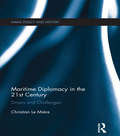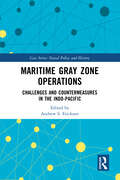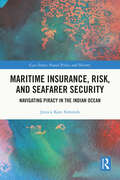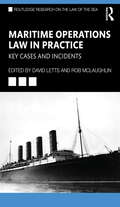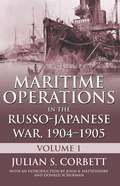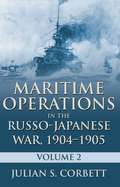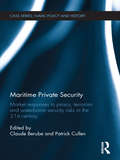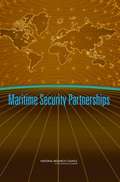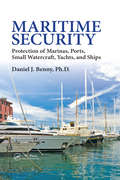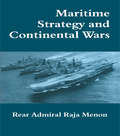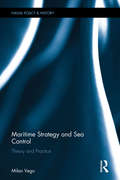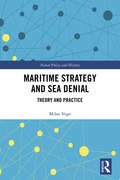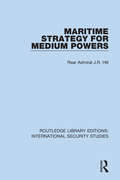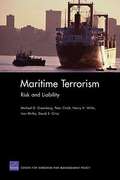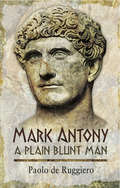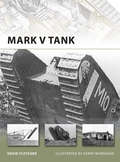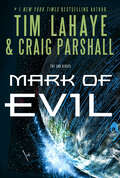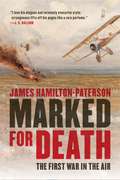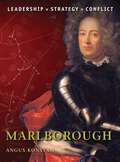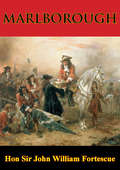- Table View
- List View
Mariquita—Revisited
by Chris Perez HowardMariquita, first published in 1982, has become the most widely read novel about the CHamoru experience during World War II on Guam. In the book, author Chris Perez Howard chronicles his mother's vibrant life before the War, her enduring strength during the Japanese occupation of the island, and her tragic death at the end of it. In this updated edition of the classic, Perez Howard revisits the story and adds more details, photos, and letters. It is a continuing tribute to his mother whose legacy lives on in the memories of all who read it.
Maritime Diplomacy in the 21st Century: Drivers and Challenges (Cass Series: Naval Policy and History)
by Christian Le MièreThis book aims to redefine maritime diplomacy for the modern era. <P><P>Maritime diplomacy encompasses a spectrum of activities, from co-operative measures such as port visits, exercises and humanitarian assistance to persuasive deployment and coercion. It is an activity no longer confined to just navies, but in the modern era is pursued be coast guards, civilian vessels and non-state groups. As states such as China and India develop, they are increasingly using this most flexible form of soft and hard power. <P><P>Maritime Diplomacy in the 21st Century describes and analyses the concept of maritime diplomacy, which has been largely neglected in academic literature. The use of such diplomacy can be interesting not just for the parochial effects of any activity, but because any event can reflect changes in the international order, while acting as an excellent gauge for the existence and severity of international tension. Further, maritime diplomacy can act as a valve through which any tension can be released without resort to conflict. Written in an accessible but authoritative style, this book describes the continued use of coercion outside of war by navies, while also situating it more clearly within the various roles and effects that maritime forces have in peacetime. <P><P>This book will be of much interest to students of seapower, naval history, strategic studies, diplomacy and international relations.
Maritime Gray Zone Operations: Challenges and Countermeasures in the Indo-Pacific (Cass Series: Naval Policy and History)
by Andrew S. EricksonThis book addresses the issues raised by Chinese and North Korean maritime ‘gray zone’ activities in the Indo-Asia-Pacific region. For years, China has been harassing its neighbors in South China Sea and East China Sea, employing both coast guard and maritime militia forces, in the name of safeguarding Chinese sovereignty. This behavior is frequently characterized as constituting ‘gray zone’ activity. As the term suggests, this refers to a state of conflict that falls between peace and war. Interestingly, the Yellow Sea, which is geographically much closer to China than South China Sea or East China Sea, has been comparatively quiet. However, there is a danger that the PRC has the capability to replicate its gray zone activities in this area. Worse, North Korea has also been engaging in carefully-calibrated provocations there. This book addresses pressing questions about these activities and offers: (1) a conceptual framework to understand maritime gray zone operations and Beijing and Pyongyang’s approach, with an unprecedented focus on the Yellow Sea; (2) a comprehensive, fully updated fleet force structure for the PRC’s Coast Guard, together with projections regarding how the Coast Guard is likely to develop in the future; (3) an extensive organizational analysis of the PRC’s Maritime Militia that surveys the many units relevant to Yellow Sea operations, some revealed publicly for the first time; and (4) a detailed assessment of North Korean maritime ‘gray zone’ activities. This book will be of great interest to students of naval strategy, maritime security, Asian politics, and international security.
Maritime Insurance, Risk, and Seafarer Security: Navigating Piracy in the Indian Ocean (Cass Series: Naval Policy and History)
by Jessica Kate SimondsThis book explores the complex interplay between maritime insurance and piracy in the Indian Ocean, a crucial global trade route.Drawing on rich oral histories, this work delves into the lives of seafarers and insurance experts who confront the harsh realities of Somali piracy. Through a series of compelling case studies, including the notorious Maersk Alabama hijacking, the book sheds light on the evolving role of maritime insurers as they navigate the precarious waters of risk management. It highlights how these companies not only provide financial protection but also shape maritime security practices, transforming the sea into a managed space of governance. Spanning a geographical range from the Horn of Africa to global maritime hubs, the book emphasises the human cost of piracy and the often-overlooked experiences of those at sea. Bridging between historical cases and contemporary challenges, the book advocates a deeper understanding of the maritime landscape. Furthermore, by exploring the perspectives of seafarers, the book provides a unique insight into the emerging challenges faced at sea and the importance of safety in moments of maritime insecurityThis book will be of much interest to students of maritime security, naval policy, the history of insurance, and international relations.
Maritime Operations Law in Practice: Key Cases and Incidents (Routledge Research on the Law of the Sea)
by Rob McLaughlin David LettsThe law that applies to maritime operations at sea is complex and comprises two distinct elements, treaty law 1982 UN Convention on the Law of the Sea, and the cases and incidents that occur at sea in both peacetime, and during armed conflict, which result in the creation of customary international law applicable to maritime operations at sea. Covering sovereignty and vessel status, jurisdiction and interdiction, freedom of navigation, maritime law enforcement and security, and the law of naval warfare, this edited collection brings together the most famous and influential cases and incidents at sea. Exploring the entire spectrum of maritime operations from ‘high end’ warfighting to constabulary operations that are conducted by naval forces and maritime law enforcement agencies at sea to provide the factual circumstances of each case or incident. Offering sophisticated analysis and insights into the case or incident’s enduring importance, and their significance for the development of the law applicable to maritime operations. Offering a detailed account and evaluation of the most critical but rarely understood cases in Maritime Operations Law, which encourages comparison between key cases, this book will be an essential reference for practitioners, scholars, teachers, and students of maritime operations law.
Maritime Operations in the Russo-Japanese War, 1904--1905 Volume 1
by Julian S. CorbettUnlike Alfred Thayer Mahan, Britain’s great maritime strategist Sir Julian Corbett believed that victory in war does not come simply by the exercise of sea power and that, historically, this has never been the case. Corbett’s keen analysis of the Russo-Japanese War of 1904-05 as presented in this work, along with his discussion of the pros and cons of limited conflict will be of great value to our understanding of today’s limited wars. Based on intelligence material provided by the Japanese government, this work was written as an official study in the years just before World War One and classified "confidential” by the Royal Navy. The two-volume study demonstrates the lessons the war held for the future and shows the essential differences between maritime and continental warfare, while also exploring their interaction.
Maritime Operations in the Russo-Japanese War, 1904-1905
by Julian S. Corbett Introduction by John B. Hattendorf Donald M. SchurmanUnlike Alfred Thayer Mahan, Britain’s great maritime strategist Sir Julian Corbett believed that victory in war does not come simply by the exercise of sea power and that, historically, this has never been the case. Corbett’s keen analysis of the Russo-Japanese War of 1904-05 as presented in this work, along with his discussion of the pros and cons of limited conflict will be of great value to our understanding of today’s limited wars. Based on intelligence material provided by the Japanese government, this work was written as an official study in the years just before World War One and classified "confidential” by the Royal Navy. The two-volume study demonstrates the lessons the war held for the future and shows the essential differences between maritime and continental warfare, while also exploring their interaction.
Maritime Private Security: Market Responses to Piracy, Terrorism and Waterborne Security Risks in the 21st Century (Cass Series: Naval Policy and History)
by Patrick Cullen Claude BerubeThis book examines the evolution, function, problems and prospects of private security companies in the maritime sector. The private security industry continues to evolve after its renaissance over the past few decades, first in Africa, and later in Iraq and Afghanistan. Despite this, little academic work has been done to date on the role of private security in the maritime environment. This lacuna has become more pronounced as the threat of piracy, terrorism, and other acts of maritime political violence have caused littoral states and commercial entities alike to consider the use of private security to mitigate risks. Maritime Private Security is an edited volume specifically dedicated to combating the absence of academic research in this area. The discussion of this multi-faceted subject is organised into four key parts: Part I: The Historical and Contemporary Market in Maritime Private Security Services Part II: The Emergence of Private Anti-Piracy Escorts in the Commercial Sector Part III: The Privatization of Coast Guard Services Part IV: Private Security Responses to Maritime Terrorism This book will be of much interest to students of naval policy and maritime security, private security companies, piracy and terrorism, international law and IR in general.
Maritime Security Partnerships
by National Research Council of the National AcademiesTo offer security in the maritime domain, governments around the world need the capabilities to directly confront common threats like piracy, drug-trafficking, and illegal immigration. No single navy or nation can do this alone. Recognizing this new international security landscape, the former Chief of Naval Operations called for a collaborative international approach to maritime security, initially branded the “1,000-ship Navy.” This concept envisions U.S. naval forces partnering with multinational, federal, state, local and private sector entities to ensure freedom of navigation, the flow of commerce, and the protection of ocean resources. This new book from the National Research Council examines the technical and operational implications of the “1,000-ship Navy,” as they apply to four levels of cooperative efforts: U.S. Navy, Coast Guard, and merchant shipping only; U.S. naval and maritime assets with others in treaty alliances or analogous arrangements; U.S. naval and maritime assets with ad hoc coalitions; and U.S. naval and maritime assets with others than above who may now be friendly but could potentially be hostile, for special purposes such as deterrence of piracy or other criminal activity.
Maritime Security: Protection of Marinas, Ports, Small Watercraft, Yachts, and Ships
by Ph.D, Daniel BennyIn a time when threats against the maritime community have never been greater, Maritime Security: Protection of Marinas, Ports, Small Watercraft, Yachts, and Ships provides a single, comprehensive source of necessary information for understanding and preventing or reducing threats to the maritime community.The book defines what comprises the mariti
Maritime Strategy and Continental Wars (Cass Series: Naval Policy and History #No. 3)
by Rear Admiral MenonRear Admiral Raja Menon contends that nations embroiled in Continental wars have historically had poor maritime strategies. He develops the argument that navies that have been involved in such wars have made poor contributions to politial objectives, and outlines future strategies.
Maritime Strategy and Sea Control: Theory and Practice (Cass Series: Naval Policy and History)
by Milan VegoThis book focuses on the key naval strategic objectives of obtaining and maintaining sea control. During times of war, sea control, or the ability of combatants to enjoy naval dominance, plays a crucial role in that side’s ability to attain overall victory. This book explains and analyzes in much greater detail sea control in all its complexities, and describes the main methods of obtaining and maintaining it. Building on the views of naval classical thinkers, this book utilizes historical examples to illustrate the main methods of sea control. Each chapter focuses on a particular method, including destroying the enemy forces by a decisive action, destroying enemy forces over time-attrition, containing enemy fleet, choke point control, and capturing important enemy's positions/basing area, The aim is to provide a comprehensive theory and practice of the struggle for sea control at the operational level. It should therefore provide a guide to practitioners on how to plan and conduct operational warfare at sea. The book will be of much interest to students of naval strategy, defence studies and security studies.
Maritime Strategy and Sea Denial: Theory and Practice (Cass Series: Naval Policy and History)
by Milan VegoThis book focuses on the theory and practice of maritime strategy and operations by the weaker powers at sea. Illustrated by examples from naval and military history, the book explains and analyzes the strategies of the weaker side at sea in both peacetime and wartime; in defense versus offense; the main prerequisites for disputing control of the sea; and the conceptual framework of disputing control of the sea. It also explains and analyzes in some detail the main methods of disputing sea control – avoiding/seeking decisive encounters, weakening enemy naval forces over time, counter-containment of enemy naval forces, destroying the enemy’s military-economic potential at sea, attacks on the enemy coast, defense of the coast, defense/capturing important positions/basing areas, and defense/capturing of a choke point. A majority of the world’s navies are currently of small or medium-size. In the case of a war with a much stronger opponent, they would be strategically on the defensive, and their main objective then would be to dispute control of the sea by a stronger side at sea. This book provides a practical guide to such a strategy. This book would be of much interest to students of naval power, maritime security, strategic studies and military/naval history.
Maritime Strategy for Medium Powers (Routledge Library Editions: International Security Studies #11)
by Rear Admiral HillThis book, first published in 1986, argues that there is a special category of medium powers in the world – such as Britain, France, India, Brazil, Japan, China and others – which have sufficient military power to do something to protect their interests but which are not a match for the superpowers. It surveys the whole range of naval warfare – equipment, operations, organisation and deployment – and discusses how each item should be tailored by the recognition of the position of the medium power. It considers alliances, a key element for medium powers, and explores how these should be handled and what use they may be expected to fulfil. The book argues that the concept of medium power, here developed thoroughly for the first time, will be extremely useful to many countries in defining their strategic role in a purposeful way.
Maritime Terrorism: Risk and Liability
by Peter Chalk David S. Ortiz Henry H. Willis Michael D. Greenberg Ivan KhilkoPolicymakers have become increasingly concerned in recent years about the possibility of future maritime terrorist attacks. Though the historical occurrence of such attacks has been limited, recognition that maritime vessels and facilities may be particularly vulnerable to terrorism has galvanized concerns. In addition, some plausible maritime attacks could have very significant consequences, in the form of mass casualties, severe property damage, and attendant disruption of commerce. Understanding the nature of maritime terrorism risk requires an investigation of threats, vulnerabilities, and consequences associated with potential attacks, as grounded both by relevant historical data and by intelligence on the capabilities and intentions of known terrorist groups. These risks also provide the context for understanding government institutions that will respond to future attacks, and particularly so with regard to the U.S. civil justice system. In principle, civil liability operates to redistribute the harms associated with legally redressable claims, so that related costs are borne by the parties responsible for having caused them. In connection with maritime terrorism, civil liability creates the prospect that independent commercial defendants will be held responsible for damages caused by terrorist attacks. This book explores risks and U.S. civil liability rules as they may apply in the context of these types of attacks.
Mark Antony: A Plain Blunt Man
by Paolo de RuggieroMark Antony was embroiled in the tumultuous events of the mid-1st century BC, which saw the violent transformation from the Roman Republic to the Roman Empire. After being defeated by Augustus he has often been characterized by hostile historians as a loyal henchman of his uncle Julius Caesar but without the guile and vision to attain greatness in his own right (hence Shakespeare casts him as a 'plain, blunt man' whom Caesar's assassins don't think it worthwhile to kill). In his infamous alliance and love affair with Cleopatra of Egypt he is also often seen as duped and manipulated by a sharper mind. Despite this there is no doubt Antony was a capable soldier. He first saw action leading a cavalry unit in Judaea, before giving valuable service to Julius Caesar in Gaul. He again served with distinction and led Caesar's right wing at the climactic battle of Pharsalus, and he was decisive in the defeat of the conspirators at Philippi which ended 100 years of Civil wars. But Paolo de Ruggiero re-assesses this pivotal figure, analyses the arguments of his many detractors, and concludes that he was much more than a simple soldier, revealing a more complex and significant man, and a decisive agent of change with a precise political vision for the Roman world.
Mark IV vs A7V
by Peter Dennis David HigginsThe German A7V and the British Mark IV were similar in weight, size, and speed, but differed significantly in armour, armament and maneuverability. The A7V had thicker armour, and had nearly double the horsepower per ton. The Mark IV's pair of side-mounted 6pdr cannons forced the vehicle to present its side arc to an enemy in order to fire one of its main guns. Possessing twice as many machine guns as the Mark IV, the A7V had a frontally mounted 57mm gun that proved capable of defeating the Mark IV's armour. The Mark IV's rhomboid design proved superior in crossing trenches, climbing obstacles and moving over rough terrain. As the first tank-versus-tank engagement in history, the fighting around Villers-Bretonneux showcased the British Mark IV and German A7V designs. Although not purpose-built to combat enemy armour, both vehicles proved the viability of such operations, which during the postwar period led to key advances in suspension, armour, gunsights, ammunition, and command and control. While the British continued to develop their armoured forces, German armour development never materialized, and only in the postwar period did they address the issue.
Mark V Tank
by Henry Morshead David FletcherAlthough to the casual eye all British tanks of World War I look much the same, the Mark V is quite outstanding and has a strong claim to be the tank that won World War I for the Allies. In this title, renowned tank expert David Fletcher examines the technological developments that made this tank excel where others had failed, and the reasons why it gave the British the upperhand over the Germans on the battlefield and why it was adopted by the US Tank Corps. Accompanied by detailed artwork showing the design changes that allowed the Mark V to breach the widest German trenches, this title is an excellent resource for the study of the armor of World War I.
Mark of Evil: The End Series, Book 4 (The End Series #4)
by Craig Parshall Tim LaHayeIn the final installment of The End series, economies have collapsed, freedom has been suppressed, and peace is a distant memory.The world is falling apart. Joshua Jordan&’s protégé Ethan March, along with Jimmy Louder and Rivka Reuban, have been left behind in a world that is rapidly coming under the complete influence of the Antichrist.Technology is growing by leaps and bounds with BID-Tag implants, robotic police units, and drone-bots flying overhead . . . all designed to control and dominate those who resist the Antichrist&’s reign of evil. As Biblical prophecy is fulfilled each new day, Ethan and the others in the Remnant struggle to eat, to procure necessary goods, and to avoid the Global Alliance—in short, to survive.But when the forces of evil attempt to pervert the world&’s most powerful information system to their own sinister ends, eliminating everyone who gets in their way, it&’s up to Ethan and the Remnant to subvert their dark ambitions.From New York Times bestselling author Tim LaHaye, creator and co-author of the world-renowned Left Behind books, Mark of Evil is the final thrilling chapter to The End series.Futuristic Christian political thrillerThe final installment of The End seriesBook 1: Edge of Apocalypse Book 2: Thunder of HeavenBook 3: Brink of ChaosBook 4: Mark of EvilIncludes discussion questions for book clubs
Marked for Death: The First War in the Air
by James Hamilton-PatersonA dramatic and fascinating account of aerial combat during World War I, revealing the terrible risks taken by the men who fought and died in the world's first war in the air. Little more than ten years after the first powered flight, aircraft were pressed into service in World War I. Nearly forgotten in the war's massive overall death toll, some 50,000 aircrew would die in the combatant nations' fledgling air forces. The romance of aviation had a remarkable grip on the public imagination, propaganda focusing on gallant air 'aces' who become national heroes. The reality was horribly different. Marked for Death debunks popular myth to explore the brutal truths of wartime aviation: of flimsy planes and unprotected pilots; of burning nineteen-year-olds falling screaming to their deaths; of pilots blinded by the entrails of their observers. James Hamilton-Paterson also reveals how four years of war produced profound changes both in the aircraft themselves and in military attitudes and strategy. By 1918 it was widely accepted that domination of the air above the battlefield was crucial to military success, a realization that would change the nature of warfare forever.
Market Forces
by Richard MorganChris Faulkner has just landed the job of his dreams. But Shorn Associates are market leaders in Conflict Investment. They expect results, they expect the best. Chris has one very high-profile kill to his name already but he will have to drive hard and go for kill after kill if he's to keep his bosses happy. All he has to do in the meantime is stay alive ...Morgan's new futuristic thriller is perfect for any fan of the modern thriller. It combines the big ideas of Michael Crichton with a pounding narrative drive.
Market Forces (GOLLANCZ S.F.)
by Richard MorganChris Faulkner has just landed the job of his dreams. But Shorn Associates are market leaders in Conflict Investment. They expect results, they expect the best. Chris has one very high-profile kill to his name already but he will have to drive hard and go for kill after kill if he's to keep his bosses happy. All he has to do in the meantime is stay alive ... <p><p>Morgan's new futuristic thriller is perfect for any fan of the modern thriller. It combines the big ideas of Michael Crichton with a pounding narrative drive. <p>Read by Simon Vancer <p>(p) Tantor Media 2018
Market Forces: A Novel (Gollancz S. F. Ser.)
by Richard MorganChris Faulkner has just landed the job of his dreams. But Shorn Associates are market leaders in Conflict Investment. They expect results, they expect the best. Chris has one very high-profile kill to his name already but he will have to drive hard and go for kill after kill if he's to keep his bosses happy. All he has to do in the meantime is stay alive ...Morgan's new futuristic thriller is perfect for any fan of the modern thriller. It combines the big ideas of Michael Crichton with a pounding narrative drive.
Marlborough
by Angus Konstam Graham TurnerJohn Churchill, 1st Duke of Marlborough, is one of the great commanders of history. Using his great charm and diplomatic skills he was able to bind troops from various European states into a cohesive army that won a string of victories over the French armies of King Louis XIV, the first of which was perhaps his most spectacular triumph - the battle of Blenheim. Other great victories followed, but political and social turmoil proved harder opponents to defeat. This book provides a detailed look at the many highs and lows in the career of the most successful British general of his era.From the Trade Paperback edition.
Marlborough
by Hon Sir John William Fortescue"A masterpiece of military history, this is the concise biography of arguably England's greatest General by arguably Britain's greatest military historian. Fortescue's Marlborough is less of a hagiography than the huge two volume life by Marlborough's great descandent, Winston Churchill, but is a marvellous read for all that. Briskly taking in the story of the political machinations in Britain which often bedevilled the Duke's brilliance in battle, Fortescue's focus is firmly on the field of conflict. His accounts of the Duke's four great victories - Blenheim, Ramillies, Oudenarde and Malplaquet - as well as his sieges and lesser actions, is magnificent. A master of military history writing about a master of the art of war itself - this book, like Marlborough himself, cannot be beaten."-Print ed.

